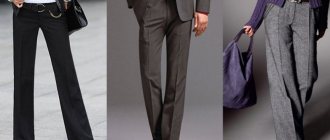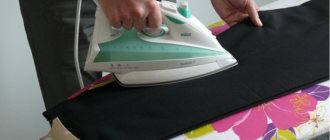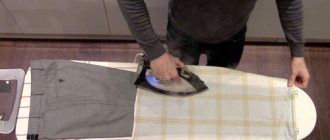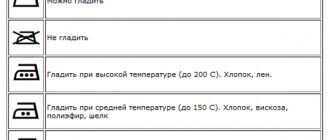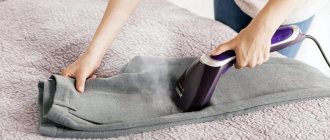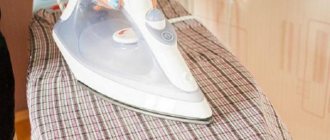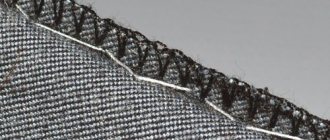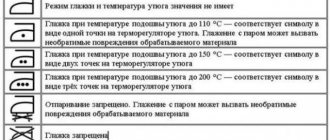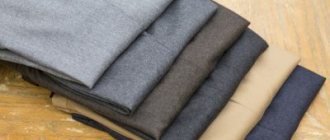For a long period of time, the main trend has been occupied by creases on trousers. They have forever become part of the classic costume. Correctly making such curves so that they harmoniously and ideally complement the entire image can only be done by following a few tips.
The history of the arrows
There are many versions that tell different stories about the origin of arrows on trousers. One such story comes from the 19th century. Then tailoring in factories began to develop with all its might, collecting large quantities of these clothes. To send finished items to other countries and cities, it was customary to fold them very tightly together. After unpacking, customers discovered an item that had been left in such a state for so long that it had wrinkles.
One of the authors of the appearance of the arrows is the Duke of Windsor, who was caught in a downpour while traveling to a social event. His trousers were completely wet and lost their shape. Seeing a peasant woman, he asked her to iron them. The girl was in such a hurry that she folded the crotch and side seams, resulting in an interesting fold. The Duke liked it so much that he introduced it into fashion.
Which of these stories is more truthful is still unknown, however, fashionistas liked such folds so much that they began to do it intentionally. First, this fashion affected men's clothing and only then women's clothing. In modern times, such a thing is an inseparable element for traditional sets.
Preparing things
Smooth, symmetrical curves create the effect of sophistication and style on any person. However, in order not to ruin your trousers, you should adhere to several basic rules.
Accuracy
Creating neat curves on clothes should begin with washing. This should be done so that during the ironing process the existing dirt does not become completely ingrained into the fabric, because after that it will no longer be possible to wash it off. Therefore, if there are traces of sweat, stains, or various stains on your trousers, you should not be lazy about loading the washing machine.
Important! Only clean clothes can be exposed to high temperatures.
Iron mode and material composition
Before you start ironing, you should study all the properties of the item. After all, only the specified temperature is suitable for various fabrics. For example, wool will require 100-120 degrees, for nylon, knitwear and silk 60-80, pure cotton, drape, tweed 140-170, and for denim 150-200. Without knowing such features, there is a big risk of completely ruining the thing. Therefore, to avoid doubts, you should carefully study all the labels on things, where all the necessary information about proper washing and ironing is usually indicated.
Ironer
Such a complex word means just a piece of ordinary fabric through which clothes are ironed. This helps the item remain without iron marks. One of the main conditions for its use is a perfectly clean iron. Cotton or white linen are usually used, but for woolen items, wool is best. It is quite easy to use: the iron is placed on the fabric and blotted with a spray bottle, brush or wet sponge, and then ironed until completely dry. If there is no special fabric for this, then ordinary gauze or white material that does not leave marks will do.
Correct surface
To get the perfect result, of course, it is best to use a specially designed ironing board. However, if there is none, then any equal surface can do. A floor pre-covered with a towel or blanket is ideal.
Spray
Nowadays, almost every iron has a steam mode. If it happens that such a function is missing, a regular spray bottle with water can come to the rescue to moisten the material. This should be done to make it easier to iron. A moistened cloth will allow you to smooth out all the creases and folds much faster. And the risk of burning the fabric will be much less.
Interesting! Nowadays, a large number of devices have been created that can simplify the life of any housewife. This includes a steamer, which is able to more carefully and quickly deal with all hard-to-reach places.
Temperature selection
There are rules for ironing trousers made from various types of material. Selecting the temperature setting will protect the fabric from damage. Each product has a label indicating acceptable care methods.
Particular attention should be paid to the “crossed out iron” and “steam” icons, which prohibit any heat treatment.
| Material | Temperature conditions, recommendations |
| Suit fabric | You can iron at 200 degrees, do not be afraid to treat with hot steam. |
| Durable cotton | The material can withstand temperatures up to 170 degrees. It's better to moisten first. |
| Knitwear | Heat the iron to medium or use a steam generator in a vertical position. |
| Linen | Iron the arrows at 200 degrees. |
| Wool-blend material, wool | Experts advise using steaming in a vertical position. Set the sensor to 100 degrees. |
| Viscose | It is allowed to moisten the fabric and set the temperature no higher than 120 degrees. |
| Delicate silk, twill, satin | Iron without steam. Do not use wet padding. |
One point on the iron indicates that the technique is heated to 110 degrees, two - to 150, and three - to 200. If the fabric contains synthetics, be sure to use an ironing iron, gauze or thin material. Handle clothes with pile only from top to bottom.
Ways to iron trousers
After all the preparation, you can start ironing. At the same time, you should not immediately start forming arrows. To begin with, the clothes should be ironed from the inside out, and then from the front.
From the inside out
To iron trousers from the wrong side, you need to turn them inside out and iron them completely, starting from the top. In this case, a sheet of paper without inscriptions should be placed under the pockets, which will prevent the appearance of unsightly creases. The side seams should also be given attention. To iron the top of your trousers, place them on the side of the ironing board.
From the front side
After the work is done, the item will need to be turned inside out again. To create arrows, work should be done in 3 stages:
- The fabric will need to be laid so that the inside and outside seams are held together exactly. For any deviation of the arrow, the bend will be made incorrectly.
- Using damp gauze, you can begin to move the iron over the entire pant leg. In this case, movements should be careful and unhurried. You shouldn’t constantly move the device along the created arrow; it would be better to tear the iron off your trousers and apply it again. This will reduce the risk of material shifting.
At what temperature should you iron?
Each product has a special label indicating care instructions. To determine the appropriate temperature, you need to find an icon in the form of an iron with a number of dots. The more there are, the more you can warm up the device before ironing. If there is no label, you should focus on the type of fabric:
- natural cotton – 180-220 °C;
- flax – 210-240 °C;
- viscose – 150-180 °C;
- any type of wool – 150-170 °C;
- silk – 140-160 °C;
- polyester – 140-150 °C.
Leather dress pants cannot be ironed; when exposed to high temperatures, the material deteriorates and becomes deformed.
Delicate fabrics such as silk, viscose and jersey should only be ironed on the reverse side at the lowest possible temperature. And it is best to create arrows on woolen products using vertical steaming.
Traditional methods
In order to make creating creases on trousers much easier, several useful tricks were invented:
- The item, turned inside out, is placed on the ironing board. Then, using a bar of soap, draw a line where the folds will be in the future. Then, on the front side, using a wet comb, insert it between the teeth and draw along the drawn line with slight pressure.
- You can also simply lightly point a piece of soap over the place where the arrows will be, and then smooth it through wet gauze on the front side.
Stage 2: Organize the workplace
The table or ironing board must be spotlessly clean and well lit (the table is first covered with a blanket in several layers). The soleplate of the iron must be inspected no less carefully, since adhering particles of dirt can ruin the fabric.
Note to the housewife: regular toothpaste will help descale your iron. Distribute a small amount on the sole and wipe thoroughly with a damp cloth. Finally, rinse and dry the surface with a piece of wool cloth.
To iron trousers, you will definitely need an ironer - a piece of loose textile like gauze or chintz. Its purpose is to become a kind of layer between the hot surface of the iron and clothing, thereby preventing sticking. The undershirt should have a neutral white color (in this case you can be sure that the steamed paint will not stick to the trousers), the approximate dimensions are 30 by 50 centimeters. As ironing progresses, the thin fabric is periodically wetted, so you will also need a spray bottle.
Before subjecting the item to heat treatment, do not forget to check (and, if necessary, empty) all pockets.
How to remove uneven arrows
Even experienced housewives can make mistakes, so if you suddenly notice upon closer examination that the arrow is uneven, it can be corrected in several ways:
- the first thing you need to do is simply iron the resulting ones from the wrong side;
- If regular ironing does not help, then you can use regular 9% table vinegar to eliminate a crooked crease. Mix a liter of water with two tablespoons and soak gauze in the solution. Then put it on your trousers, which you have previously turned inside out, and steam them. After this, you can start creating beautiful arrows again;
- If any stains appear after ironing, laundry soap will help get rid of them. They will need to soap all problem areas and soak for 15 minutes. After that, wash again, rinse and dry in the sun.
Helpful information
To properly iron your trousers and create fashionable creases on them, you should follow these important recommendations:
- if you want to get thinner and more elegant lines, you should moisten the iron not with water, but with a solution of vinegar (1 tbsp per 1 liter of water);
- It is better to start ironing from the knee area, thereby ensuring a perfectly even length;
- it is necessary to ensure that the arrows become a continuation of the darts (this will help make them perfect and avoid possible twisting);
- after ironing, you need to put the product aside for a while and only then put it on (remaining moisture on the fabric makes it more wrinkled, so you need to wait);
- After taking off your trousers, you need to clean them from dirt and hang them on a hanger (this will help you spend less time creating or updating creases, rather than ironing them every day).
Before ironing your trousers, you can secure future creases with pins. This method is quite convenient, but sometimes it leads to damage to the material.
Worth considering! To avoid fabric damage, it is recommended to first test the product for its puncture resistance. To do this, a pin is used in the most inconspicuous part of clothing.
Adviсe
There are several tricks and tips on how to make arrows on clothes so that they always look perfect:
- Some housewives claim that you can iron trousers through newspaper, but if you do not want to spoil the item with printing ink, then you should not use this method.
- If you need to transport ironed trousers, you can carefully roll the item with a roller, then the risk that they will wrinkle will be minimal.
- The kinks will turn out much smoother if you start ironing from the knee area.
- Men and women involved in business are already so accustomed to polishing their pants that it has become part of their everyday routine. It is important that the effect can last longer after ironing. To do this, you should give things a little time to cool down.
- You can remove the gloss after treatment with a solution of water and vinegar.
- It is necessary to iron not only the trousers themselves, but also all pockets, fasteners, belt loops, and belts.
- Some crafty housewives have come up with an absolutely simple way to create beautiful folds. To do this, fold the fabric in half and connect the instep and side seams. In this form, place it under the mattress and lie down to rest. The next morning you will find perfect arrows.
- If it turns out that you don’t have vinegar on hand, you can replace it with ammonia.
